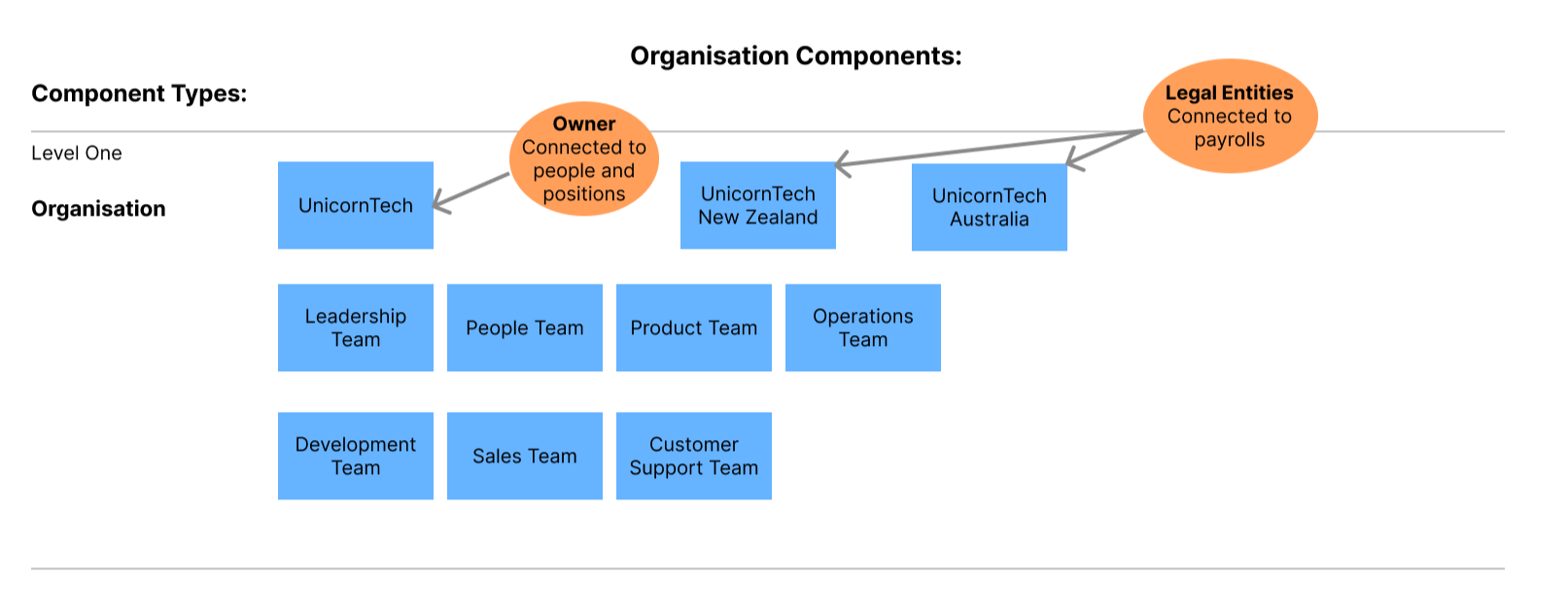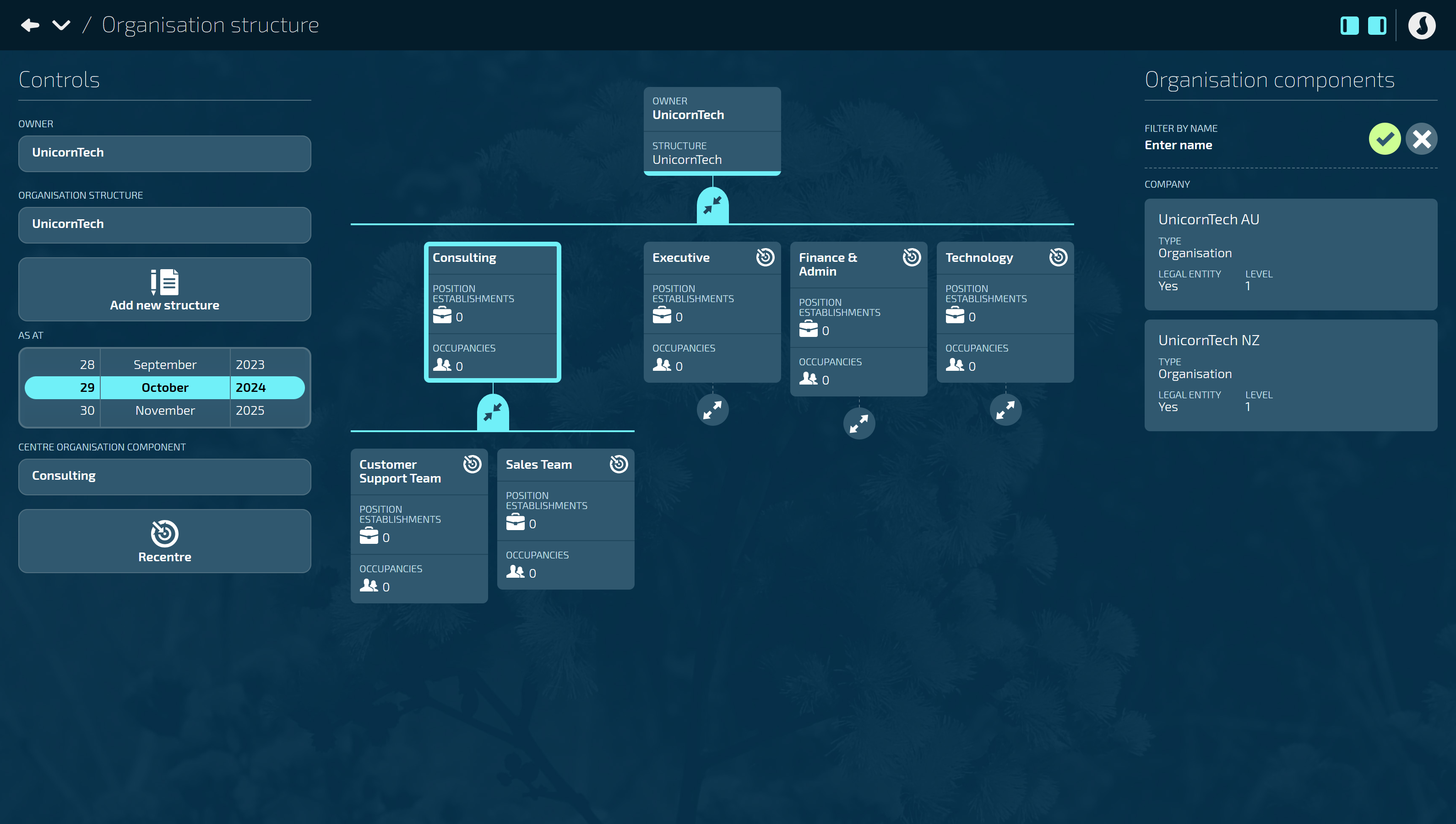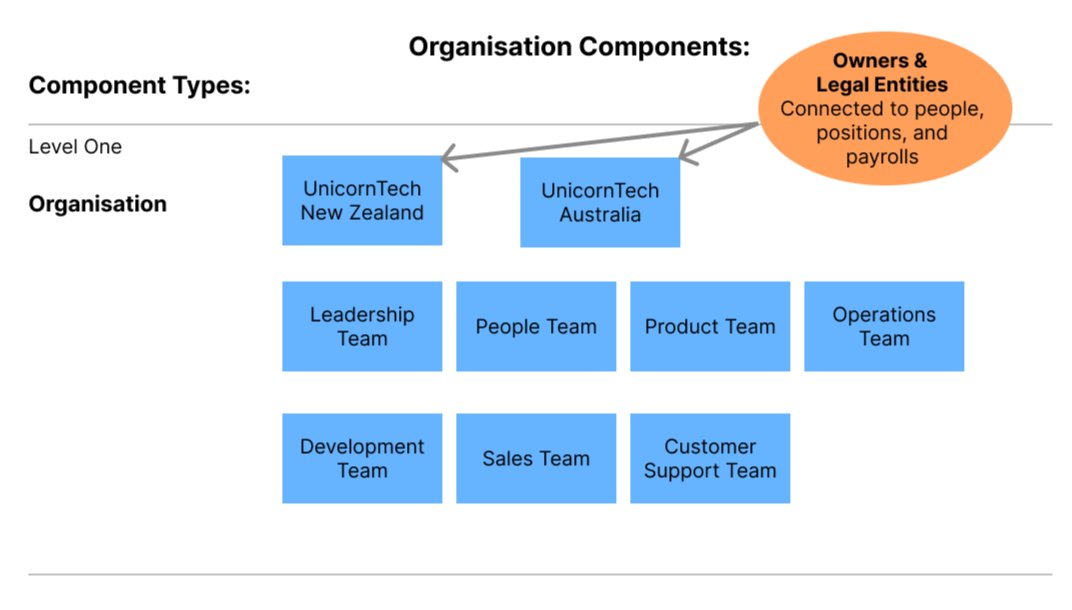Initial access and setup
Access to the Organisation Components bubble
For Jemini consultants and system administrators
Jemini consultants and system administrators typically handle user access to the Organisations Components bubble. If you need access, please reach out to your consultant.
How to grant access to Organisation Components
Setting up and managing Organisation Components
For Jemini consultants and HR managers and administrators
Most Organisation Components are created during the process of setting up a new Jemini environment. Guides for adding and managing Organisation Components can be found through these links:
How to add Legal Entity Organisation Components (Australia only) / How to add Legal Entity Organisation Components (New Zealand only)
Choosing the best configuration approach
There are many ways to configure Organisation Components, especially if you’re creating Organisation Structure. It’s important to consider whether you’ll be using Organisation Structures when you start creating Organisation Components because the Organisation Structure is dependent on the components you create.
To give you a better understanding of the different configuration approaches, we’ll use our fictional company, UnicornTech, to demonstrate the many ways an organisation can set up Organisation Components.
UnicornTech organisation summary
UnicornTech is a unicorn robot manufacturing company in both Australia and New Zealand. It has two legal entities: UnicornTech New Zealand and UnicornTech Australia. Employees are paid through the Australian payroll or the New Zealand payroll, depending on where they’re located.
It has four divisions spread across both countries. There are seven teams within those divisions.
Divisions and teams:
Executive
Leadership Team
Finance & Administration
People Team
Technology
Product Team
Operations Team
Development Team
Consulting
Sales Team
Customer Support Team
Configuration options for UnicornTech
There are at least four ways UnicornTech can set up its Organisation Components. It will need at least one Owner Organisation Component to connect to its people and positions. It will also need two legal entity Organisation Components to connect to its payrolls.
Below are the various ways UnicornTech could configure their Organisation Components by considering potiential Organisation Structures.
Hierarchical Organisation Structure - One structure with two separate legal entities
Hierarchical Organisation Structure - One structure divided into two branches
Hierarchical Organisation Structure - Creating more than one structure
Flat Organisation Structure

If UnicornTech decides to go for a flat Organisation Structure, it won’t need to set up an Organisation Structure chart nor consider the hierarchy between components. It can have just one Component Type. However, it will still need to consider what components it wants to connect to it’s employees, positions and payrolls.
In this scenario, UnicornTech have opted to make an Owner Organisation Component called ‘UnicornTech’. This is what they’ll use whenever they need to connect an Owner to an employee or position establishment. They also have two Legal Entity Organisation Components to connect to their payrolls: ‘UnicornTech New Zealand’ and ‘UnicornTech Australia’. The remaining components will be used for reporting purposes. Each of these components will be connected to an employee’s Occupancy. UnicornTech wanted to be able to report on each team, and so has created components for each team. Another option would’ve been to create components for each division, however, they wouldn’t have been able to differentiate between the teams in that case.
TIP
Another option for a flat Organisation Strucutre would be to make the two legal entities Owners instead of having a separate Owner. This means that UnicornTech would have two Owners to choose from when adding employees or position establishments: ‘UnicornTech New Zealand’ or ‘UnicornTech Australia’.
Hierarchical Organisation Structure - One structure with two separate legal entities
.png)
This is the scenario that UnicornTech chose, as shown in the screenshot below.

In this scenario, UnicornTech has opted for a hierarchical approach. They created a placeholder Organisation Component to act as the Owner and head of the Organisation Structure. They also created two Legal Entity Organisation Components to connect to their payrolls. These won’t be connected to the Organisation Structure. The Legal Entities can’t be viewed in the Organisation Structure, but you can see them in the Organisation Components view:
.png)
The Component Types are:
Organisation
Division
Team
This structure gives the best balance between creating enough options for reporting while keeping the upkeep of the components manageable.
When UnicornTech needs to connect an Organisation Component to an Occupancy, they’ll get best results for reporting if they always choose the lowest component in the structure, that is, the Team component. This will give them consistent results in their reports.
Hierarchical Organisation Structure - One structure divided into two branches
.png)
In this scenario, UnicornTech has opted for a hierarchal approach and separated each division and team by their legal entity, payroll and location (‘UnicornTech New Zealand’ and ‘UnicornTech Australia’).
The Component Types are:
Organisation
Country
Division
Team
Because the child Organisation Components are split by country, each component needs a New Zealand version and an Australian version. For example, ‘NZ Executive’ and ‘AU Executive’.
Although this structure gives more options for reporting, it’s a lot more work to manage. Even though you’ll only have one Owner to choose when setting up Employees and Position Establishments, you’ll have double the amount of components to choose from when setting up an employee’s Occupancy, compared to the previous scenario.
Hierarchical Organisation Structure - Creating more than one structure
.png)
In this scenario, UnicornTech created two separate Organisation Structures, each requiring it’s own Owner, which is also a Legal Entity: UnicornTech New Zealand and UnicornTech Australia.
The Component Types are:
Organisation
Division
Team
This structure effectively divides the teams between Australia and New Zealand. Each structure will require its own set of generated reports. Additionally, when assigning an Owner and other Organisation Components to Employees and Occupancies, you’d need to make sure you select the correct one based on the respective country.
